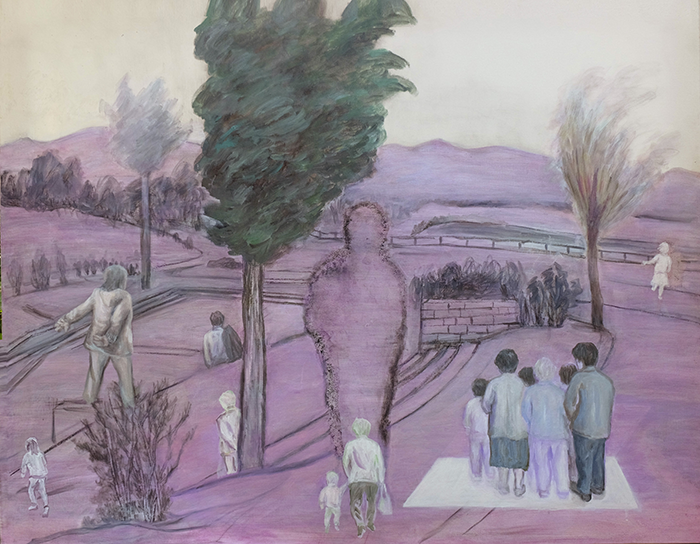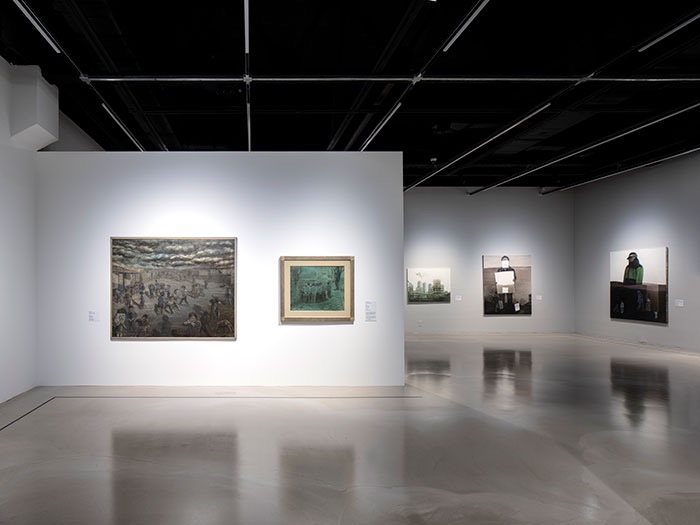
| Period| | 2023.08.11 - 2023.11.19 |
|---|---|
| Operating hours| | 11:00 - 19:00 |
| Space| | Arco Art Center/Seoul |
| Address| | 3, Dongsung-gil, Jongno-gu, Seoul, Republic of Korea |
| Closed| | Monday |
| Price| | Free |
| Phone| | 02-760-4850 |
| Web site| | 홈페이지 바로가기 |
| Artist| |
노원희
|
정보수정요청



|
|
Exhibition Information




2023 ARKO Art Center Invitational Exhibition—which seeks to encourage mid-career and earlier generations of artists to produce new works, support their artistic pursuits, and highlight their oeuvres—presents a solo exhibition by Nho Wonhee (b. 1948). Nho embarked on her creative journey in 1977 when she held her first solo show. She was also a founding member of Reality and Utterance, a small art group movement that began in 1980. The group’s inaugural exhibition, Reality and Utterance, was scheduled to be held at the Misul hoegwan (now ARKO Art Center) in 1980; however, it was canceled because the show was considered overly political in the conservative social atmosphere of the time. ARKO Art Center, which will soon celebrate its 50th anniversary, has invited Nho to put on a solo exhibition to reflect on her history as an artist from a contemporary perspective and carefully trace her outlook on individuals and society through her many years of artistic practice. Nho Wonhee: You were there consists of approximately 130 artworks and archive materials that exemplify her career as an artist, including her paintings from the 1980s, new paintings, large-scale fabric paintings, participatory artworks, and illustrations from a novel serialized in a newspaper. Her work is often associated with the terms, Minjung Art (People's Art), Busan Figurative Art, and Critical Realism. However, when examining her creative journey, one discovers aspects that cannot be completely explained with reference to any specific movement or the existing vocabulary of art history. When following her speaking with wordless painting, her empathy and compassion for human beings and the world, and her attitude towards reality and history, one encounters the psychological figuration of the era, which the artist senses and recognizes through her brushstrokes. Therefore, this exhibition serves as an opportunity to examine Nho’s artistic endeavors to document the personal and social aspects of human affairs that she has witnessed and undergone as an artist and a human being, which she expresses through the visual language of painting. Nho’s work testifies to the social circumstances and psychological hardships that individuals and communities have been subjected to. Beginning in the 1980s, which was marked by the tension between intensifying political repression and the growth of the pro-democracy movement, Nho dedicated herself to recording the zeitgeist of the time. After the front lines of the social movement collapsed, politico-social disorder and structural violence in the capitalist society cast shadows over everyday life that appeared calm. Society subsequently transitioned into an era where inequality, contradiction, and alienation penetrated deep into personal life. Facing reality, Nho strived to contemplate the systemic paradox between society and human conditions. Her artistic practice is about understanding reality in detail and communicating it through the language of painting. It is also related to her determination to document the real world in a composed manner with an awareness of history, which is her way, as a critical realist, of examining the true shape of reality detached from the conventional veneer of truth. For those who can only vaguely recognize the structures of the cleverly obscured repression and violence generated by the real-world micropolitics that surrounds them, Nho’s work provides a clear vision for seeing reality as it is, as it serves as a window onto the truth beyond reality. This exhibition is structured to reveal her utterances and determination to address social issues at the intersection between the public and private sectors. Gallery 1 presents Nho’s new works that focus on industrial disasters caused by the structural problems of Korean capitalism and the resulting suffering of individuals. These works are an extension of her portrayals of workers and state power that she began in the 1980s. These stories of victims develop into narratives about young people, workers, and protesters whose dignity is repeatedly threatened in the current era. Gallery 2 attends to the artist’s interest in female narratives, which she has had first-hand experience of. These narratives deal with the violence and repression that permeate everyday life and private spaces, as well as the artist’s meditation on the shared story of humankind. The social oppression and alienation that infiltrate one’s life and places like the home and the kitchen confront the individual and make them aware that personal spaces are social spaces and sites of political resistance. The artist aims to transcend simple representations to visualize underlying personal and social circumstances. In this way, the exhibition allows audiences to discover images of solidarity painted by social others and beings through the portrayals of labor and body concealed behind public and private sectors. The exhibition title, “You were there”1) speaks to alienated members of society. This phrase, which directly addresses the listener recognizes the person’s place and has the potential to develop into a dialogue. It prompts a conversation and foreshadows a story that will follow. Social changes begin when one stands in solidarity with those suffering and acknowledges their place in society by calling their names. This is the power of “images and words” that Nho strives for. 1) The phrase "You were there" is from Nho's artist statement. She quotes the line "You're still there, huh?" from the film The Last Waltz (1978), uttered by a band member to someone in the audience after the band's final performance finishes and the curtain closes. The artist rewrote this line as "You're not there," reflecting that Reality and Utterance is now part of the history of a bygone era—that is, it is part of the historical record. It also indicates that the meaning of their manifesto has changed. The exhibition title, "You were there," reflects one's personal place called upon in Nho's painting and the time when human life continues, representing the arrival of the next society that one is dreaming of. (Source = ARKO)
